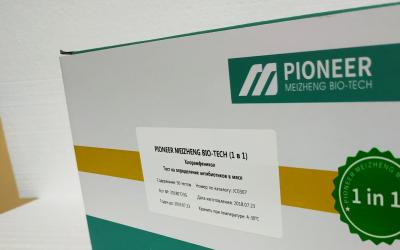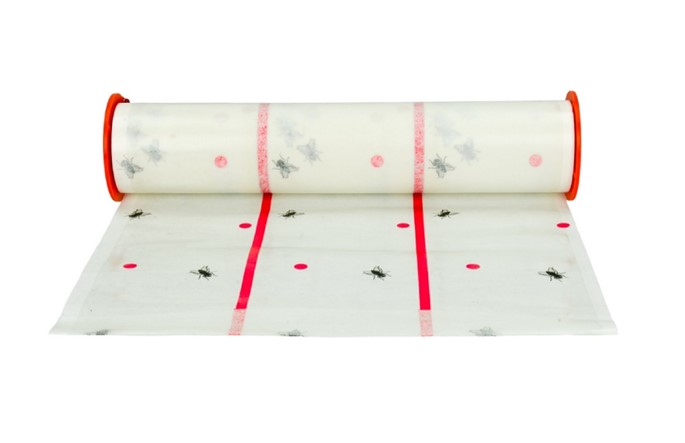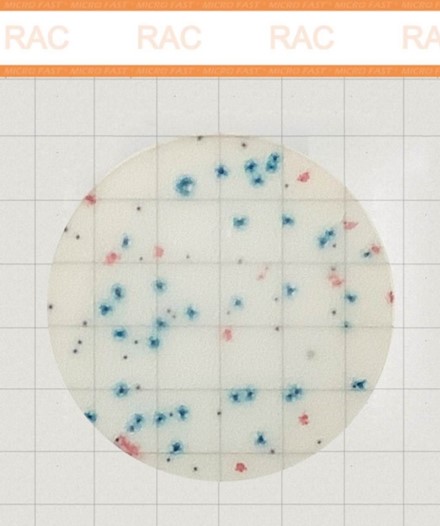What are the types of foundation and which one to choose
The choice of foundation for a private house depends on many factors. First of all, it is necessary to take into account the main ones - the condition and type of soil, the climatic conditions of the region, the type of house and the number of floors, the level of groundwater and the potential load on the foundation. Together with experts, we understand the types of foundation.
Experts in the article
Ilya Buzik, HEAD of the architectural supervision department of the Urban Planning Institute for Spatial Modeling and Development "Mirproekt"; Andrey Bannov, DOM TECHNONICOL project manager; John Mark Clancy, founder of Clancy Engineering; Maxim Lazovsky, owner of the construction company Dom Lazovsky; Mikhail Afrikanov, Development DIRECTOR, New Ruza Development. The design of the applied foundation depends on: type of soil. If the soil has good physical and mechanical characteristics and bearing capacity, then either a slab, or a strip, or a column foundation is used. If the bearing capacity of the soil is low, there are inclusions of debris, organic matter, or these are water-saturated soils, then pile, pile-grillage or tape-pile types have to be used. They transfer the load to the underlying soils, which have higher physical and mechanical characteristics; foundation loads . If the loads are small and the soils are homogeneous, then the cheapest foundation options are used - tape, tape-block. They are the most technologically advanced and are quickly mounted by a light truck crane of the Ivanovets type; architectural and planning solutions. When choosing the type of foundation, it is necessary to take into account the step of vertical structures and the size of the spans; groundwater levels and floods. Foundation typesAccording to the materials used, the following foundation groups are distinguished:
from natural stones, rubble and rubble concrete; from artificial stones, concrete blocks, ceramic stones; wooden; concrete (reinforced concrete, cellular concrete) and special.According to the type of structures, the following types of foundation are distinguished:
tape; tape pile; slab; monolithic and prefabricated; pile (stuffed, driven, bored, screwed, composite); columnar; block. Typical tapeA typical strip foundation consists of prefabricated blocks mounted with an overlap (with dressing). This is one of the most technologically advanced and prefabricated foundations. However, it can only be used in dry soils, on a flat (levelled) base, since the foundation "tape" in terms of exactly repeats the plan of vertical load-bearing structures, says Ilya Buzik.
The advantages of the strip foundation include the fact that when laying, the use of a truck crane is not required (Photo: upgradedoma.ru) Typical monolithic tape
A typical monolithic strip foundation is made of concrete or reinforced concrete using wooden formwork. Its advantages include the fact that when laying, the use of a truck crane is not required. The foundation tape can have a variable height mark, both along the upper and lower faces, explains Mikhail Afrikanov. According to him, a strip foundation in a monolithic version is considered less demanding on the relief and architectural and planning solutions for vertical structures. The disadvantages are the same as those of a typical strip foundation: the “tape” of the foundation in terms of exactly repeats the plan of vertical load-bearing structures.
Prefabricated columnar from blocksPrefabricated columnar foundation made of blocks , on top of which wooden beams are mounted, transferring the load from the structure to the foundation, is the cheapest and most technologically advanced option for small garden houses. Its bookmark does not require special equipment. The disadvantage of the foundation is that it can only be installed on a flat terrain with a small load from the structure. According to Ilya Buzik, the building design should not include a basement. For small houses, shallow foundations are used, for larger ones - laying options below the freezing depth.
A prefabricated columnar foundation made of blocks does not require special equipment (Photo: fundamentoved.ru)
See also: Stone or wooden: which house is more profitable to build after a price jump
Prefabricated columnar foundation of blocks with a waterproofing deviceA prefabricated columnar foundation made of blocks with a waterproofing device is used in the construction of fairly large houses on good soils with high physical and mechanical characteristics, says Maxim Lazovsky.
Columnar foundation made of monolithic reinforced concrete with a monolithic reinforced concrete strapping beamA columnar foundation made of monolithic reinforced concrete with a monolithic reinforced concrete strapping beam , which transfers forces from vertical structures to the pillars, makes it possible to build foundations in areas with a slope, Andrey Bannov clarifies. Its disadvantages include the fact that the "tape" of the foundation in terms of exactly repeats the plan of vertical load-bearing structures.
In the form of a monolithic slabThe foundation, made in the form of a monolithic slab , is used for relatively large loads from vertical structures in cases where the soil base has sufficiently high physical and mechanical characteristics. The plate distributes pressure over the entire area of the soil base, which solves the problem with the load. However, this is a rather expensive solution due to the high consumption of concrete, warns Ilya Buzik.
pileThe pile foundation is one of the most technologically advanced solutions. Concrete is poured into submerged metal pipes and “pipe concrete” is obtained. Pipes with a tip are easily immersed in soft soil by driving or screwing, the compressive force is perceived by the concrete in the pipes, says Ilya Buzik. This method allows you to perform foundations on slopes and on loose soils. Waterproofing elements are mounted along the heads and beams are laid, transferring forces from vertical structures to metal piles. Cons - the high price of pipes and the need to use special equipment for diving.
ColumnarThe columnar foundation is used in soils with high physical and mechanical properties. According to Ilya Buzik, its advantages are manufacturability and economy, and the disadvantages are the need to use a standard architectural and planning solution, which assumes the same vertical load from walls and columns, transmitted to the ground.
When laying such a foundation, you can use the customer's material - prefabricated slabs that are laid on a monolithic slab (Photo: fundamentoved.ru) Combined prefabricated-monolithic pile-slab
The combined precast-monolithic pile-slab type of foundation is suitable for areas with a slope of relief and soft soil. When laying such a foundation, you can use the customer's material - prefabricated slabs that are laid on a monolithic slab, increasing the rigidity of the structure, Andrey Bannov clarifies. The disadvantages of this type of foundation are the complexity of the design, the uneven load on the piles, the high cost, the need for expensive equipment and qualified performers.
Belt pileThe strip-pile foundation is used when the bearing capacity of the strip foundation, or rather the soil under it, is not enough and it needs to be increased, says Ilya Buzik. This is a relatively economical option compared to slabs and quite flexible, allowing some redistribution of loads on piles, depending on their bearing capacity. The disadvantages of the option are the need for expensive equipment and qualified performers.
pile fieldThe pile field is used in case of insufficient bearing capacity (physical and mechanical properties) of soils. After the piles are installed, their heads are cut and either grillages or a solid monolithic foundation slab are laid. This is the most expensive solution that allows building foundations for high-rise buildings even on poor soils, says Ilya Buzik.
A pile field is the most expensive solution that allows you to build foundations for high-rise buildings even on poor soils (Photo: fundamentoved.ru)
See also: It will be easier to build: new rules for private houses
From metal structuresA steel foundation is a “lightweight” version of a foundation that has the added benefit of being able to use customer material, says John Mark Clancy. The disadvantages of this type of foundation are associated with the high cost of metal, the complexity and laboriousness of monitoring welded joints and protecting against corrosion. It is used rarely and involuntarily.
Pile tape-prefabricated-monolithicA pile tape-prefabricated-monolithic version of the foundation is a lightweight version of the foundation, which is used for economic reasons (as a rule, in cases where the customer is trying to save money by using the materials and products available to him). The disadvantages of this solution are the increase in the complexity of design and construction, the long duration of construction work, the need for equipment and qualified specialists, sums up Ilya Buzik.
How to choose a foundationThe main selection criteria are economics and soil properties. The simplest, fastest installation and inexpensive type of foundation is a columnar foundation, explains Ilya Buzik. Concrete pillars are installed in the ground at the corners of the building, at the intersections of the walls and along the line of the wall with a step of no more than 3 m.
If the weight of the structure exceeds the allowable for a columnar foundation, they resort to laying a strip foundation. This type of foundation has more coverage, John Mark Clancy adds. Its design is a solid frame of the sole of the building, laid out with tapes on the ground at the place where walls and partitions pass.
The most expensive way to build a house foundation is slab. The high cost is associated with an increase in the required building material by several times in comparison with the strip foundation, says Maxim Lazovsky. The slab foundation is a solid filled soil surface along the perimeter of the future building and can withstand loads even with low physical and mechanical properties of the soil on the site. Due to the high cost, this type of foundation is used extremely rarely and only when absolutely necessary.
The pile foundation is the most expensive option, withstands high loads, allows construction on soils with extremely low physical and mechanical properties. According to Ilya Buzik, the use of a pile foundation is justified in those areas where the outer weak shell of the soil hides strong soil rocks.
The better the soil, the higher its physical and mechanical properties, the simpler, cheaper and more technologically advanced the foundation. On rocky, high-strength soils, soils made of coarse sand, as a rule, columnar foundations are made, says Mikhail Afrikanov. If the soils are weaker, then tape; if the soil properties are low, then slab. If the soil does not “carry” the load at all, then it is transferred to the underlying layers through the piles.
See also: It will not be cheaper: what awaits the construction of private houses in 2022
What materials are needed to fill the foundationExperts explain that in order to pour a monolithic foundation in soils of low humidity, heavy structural concrete of a class of at least B15 with a water permeability of at least W4 is required. In humid places where external waterproofing is used, concrete with a water permeability of at least W6 is recommended, it is most used in individual and mass construction.
Andrey Bannov, DOM TECHNONICOL project manager:
- I would recommend using a special insulation designed for foundations for buried structures. Such brands not only retain heat well, are not afraid of moisture, but are also highly durable. A special point in the construction of the foundation is concreting. During the acceptance of the concrete mix, it is desirable to check its quality. You need to check the documents, make sure that the delivery is organized without delay, or you can test the mixture right on the spot.
W8 waterproof concretes are used in the construction of structures or objects with increased requirements for resistance to moisture penetration, for example, when there is water-saturated soil on the site, there are floods and floods.
The frost resistance of concrete (the number of freezing and thawing cycles without destruction) must be at least F50. The recommended frost resistance is F100. Materials with an indicator of F150 and above are used in difficult conditions with high humidity, in places near large bodies of water, where there is a constant change in temperature, and in high-rise housing construction.
Read also:
From the foundation to the roof: 7 mistakes when building a house on your own Cost race: how expensive the construction of private houses has become What does it mean


























































